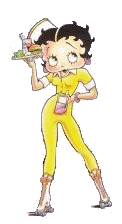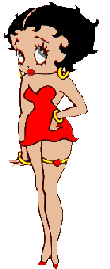
Candida Martinelli's Italophile Site

Main
Page This family-friendly site celebrates Italian culture for the enjoyment of children and
adults. Site-Overview
"Shocking, the Art and Fashion of Elsa
Schiaparelli" is the title of an
Exhibition that was held at the
Philadelphia Museum of Art. They used to have a wonderful on-line
exhibit with links to teachers' packets, but that's gone now.
But I have a copy of the PDF packet on my site, and you can download it.
Just click
to open it, then save it or print it:
Teacher's Packet. About all that remains of the show, besides their Elsa Schiaparelli collection, is
this book that accompanied the special exhibition. These images of Elsa's fashions are from the
Philadelphia Museum of Art's exhibit, curator Dilys E. Blum.
You can see better images in the accompanying book (above). Bow-knot Sweater, Hand-knit pullover sweater with bowknot, November
1927, Black and white wool. Wrap around dress and coat ensemble, Afternoon dress and winter
coat, 1930-31, Black wool and silk Evening cape spring 1937, Dark navy wool and red silk embroidered with gilt metal
thread
Sari dress, summer 1935, Rayon, metallic thread, and glass
beads. And gloves with painted nail effect made from snakeskin.
Two Evening dresses made in collaboration with Salvador Dalí, one
with lobster print , one with tear
design (tortured silk), summer/fall 1937, white and red silk
organza. The lobster dress was infamously worn by Wallis Simpson, the Duke
of Windsor's wife, who was the reason he was no longer King of the U.K..
She was photographed in the dress by famed photographer Cecil Beaton. The placement of the lobster on the 'virginal' white dress has
always caused a stir for it's sexual innuendo, and when worn by a woman
many blamed for seducing, latching on to, and not letting go of the
future King, the dress became symbolic for many and as infamous as she
had become. Here's another image of it followed by the Salvador Dali lobster
telephone from 1936 that is supposed to have inspired the dress pattern.
Butterfly dress, Waltz-length evening dress, summer 1937, Ivory organdy with multi-colored butterfly
print
Versailles Cape, Evening cape, winter 1938-39, Black silk velvet embroidered with gold
sequins, also called Apollo of Versailles Cape (Met
Museum of Art, N.Y.C.)
Flag Dress, Evening dress, summer 1940, Silk printed with flag of the Royal des
Vaisseaux Dinner jacket, spring 1947, Black crepe and pink silk taffeta with paillette and seed-pearl embroidery and jet
buttons This second series of images are from the V&A
Museum's image collection. Click on the image to go to the
V&A's page of images, then click on the corresponding image to read
more about the item. You can also
access a larger version of the image. Evening Dress, 1952, Organza, with cotton machine embroidery and
velvet appliqué, and under-dress of Thai silk. Ms. Schiaparelli
was supposedly buried in a very old Chinese silk robe of shocking pink. Jacket, 1938, Silk twill, fastened with cast metal buttons in the
shape of mermaids. From her pink and blue, circus themed line. Dress, 1940, Black silk crepe, embroidered with pearls, sequins
and metallic strip, and fastened with a plastic zip Evening Coat, 1939, Machine-sewn red grosgrain and machine-sewn
red silk Evening ensemble, 1937, Hand-sewn plaited gilt braid Evening ensemble, 1938, Rayon marocain, backed with satin, and
embroidered with various gilt threads, beads and diamantes Here are some new images to
this page.
Orange silk organza evening dress from 1935 (Met
Museum of Art, N.Y.C.)
Magenta, embroidered dinner jacket from 1938 with insect buttons.
Creative buttons that never looked like buttons was a lifelong trademark
of Ms. Schiaparelli. (Met
Museum of Art, N.Y.C.)
This blouse and matching handbag are decorated with ration coupons that
were necessary in the post-war years to purchase clothing as well as
food. From the 1940s. (Met
Museum of Art, N.Y.C.)
Suit from 1940 with the padded, squared-off shoulders that she developed
to balance out the natural pear-shape of women. This style became
very popular with movie stars of the era. (Met
Museum of Art, N.Y.C.)
Dinner suit and evening jacket with heavy embroidery from 1938. (Met
Museum of Art, N.Y.C.)
Ivory silk organza evening gown embroidered with metallic thread, pearls
and rhinestones from 1938. (Met Museum of Art, N.Y.C.)
This Elsa Schiaparelli shoe-hat has been co-opted by resent designers as
pointed out on this
web-log. Elsa Schiaparelli also designed accessories like
shoes, hats, handbags, jewelry, and scarves. Just do a Google
image search on any combination with 'Schiaparelli' and you'll get an
eyeful! Here's a link to a search for 'Schiaparelli
jewelry'. What
People Have Said About Her Books
by or About Elsa Schiaparelli Elsa Schiaparelli (b.1890 Rome, d.1973) was an Italian-born,
avant-garde fashion designer working in Paris in the 1920's and
30's. She fled the Nazis and worked tirelessly in America to raise money
for French relief charities. She refused to design clothes,
despite the many offers to back her, until France was
liberated. But when she returned to Paris after the war, her flamboyant,
creative styles were out-of-step with the austerity of the post-war
years. Her career was over by 1954. She wrote her memoirs which were published in 1954: Shocking
Life. She died in her sleep in 1973. What People Have Said
About Her Yves Saint Laurent, a protégé and colleague, said: "Her
particular charm? Her brutality, her arrogance, her
self-possession, disdain, storms of anger, odd whims, her Gorgon's
mask." And she, "didn't want to please; she wanted to dominate". And, "She slapped Paris. She smacked it. She tortured it. She
bewitched it. And it fell madly love with her." Chanel, her great rival, called her: "that Italian artist
who makes clothes". Salvador Dalí, a collaborator, said of her salon: "Here
new morphological phenomena occurred; here the essence of things was to
become transubstantiated." She said of her unusual career: "Poverty forced me to
work, and Paris gave me a liking for it." "Everybody has copied Mummy," said her daughter, Gogo
Cacciapuoti, mother of actress Marisa Berenson, and the late
photographer Berry Berenson Perkins. "She was dying to try out jeans," says Gogo, who later
brought her mother Levis from America. Time Magazine put her on their cover in 1934 because of the
importance of her style on American fashion.
These fashion innovations of Elsa Schiaparelli's are reclaimed by
every generation of fashion designers, or at least reinvented. But
she is the original. 1. Zipper closures on even her evening gowns, for the quick escape
from the dress, no doubt, for whatever the reason... 2. Graphic knitwear, knit with emblems, patterns, humorous touches. 3. The wrap-around dress (no, Diane von Furstenberg did not come up
with that on her own). 4. Mix-and-match separates for a more flexible wardrobe. 5. The backless swimsuit for the perfect tan on your back. 6. The built-in bra. 7. Culottes and pants for the modern woman, at a time when women were
not supposed to advertise that their legs were not actually connected
all the way to their ankles, the way many of the outfits of the early
century made it look. 8. The wedgie shoe. 9. The jumpsuit. 10. The overall. 11. Paper clothes. 12. Transparent raincoats. 13. Folding eyeglasses. 14. Fun furs. 15. The scarf dress. 16. Colored stockings. 17. Athletic wear or sports wear. 18. Shirtwaist jacket. 19. Ethnic-themed collections, including the turban. 20. Ready-to-wear boutique. 21. Humorous prints on serious clothes, including quotes written on
the fabrics. 22. Cast buttons in artistic forms, looking more like broaches than
buttons, adding to the piece of clothing, rather than just closing it. 22. The power-suit. The shoulder pads and inverted triangle
shape minimizing a woman's pear-shape. "The Wooden Soldier
look" she called it. Others call it the "Nutcracker
Princess look". Ouch. 23. Surrealist fashions, like erotic-shaped hats, food-looking
accessories, fabrics printed with body parts, bones and organs, and even
household furniture, so your breasts looked like a bureau drawer. 24. Synthetic fabrics with bold patterns, and special finishes. 25. Ensemble outfits with coordinated dress, jacket, scarf, etc. 26. Water-proof cottons. 27. The modern idea of a fashion show with a runway, music, art,
elongated shape-less women... Elsa Schiaparelli's famous perfume, 'Shocking' from
1936, has been recreated with all it's over 500 ingredients and 1,000$
price tag, and is on sale by the new Schiaparelli label in Paris. Click
on the image of the original perfume above, in the shape of Mae West's
curves, to visit their website. The perfume 'Sleeping' came out in 1938, and the
bottle is in the shape of a lit candle in a holder. She launched
16 perfumes.
'Shock-in-the-Box' a perfume presentation of
'Shocking' by Schiaparelli, circa 1938. Shocking pink (hot pink or fuchsia) was Elsa Schiaparelli's
signature color. It has been described by various people in
various ways. Elsa called it: "life-giving, like all the light and the
birds and the fish in the world put together, a color of China and Peru
but not of the West." Yves Saint Laurent said it had: "the nerve of red...an
aggressive, brawling, warrior pink." French lingerie shops call it: "Le shocking". She called her autobiography: "Shocking
Life". And her most famous perfume: "Shocking" was packaged
in a bottle modeled after Mae West's voluptuous figure. 1950s
cream satin fitted jacket, is appliquéd with leaves of mink and
sprinkled with crystals. (AP Photo/Union des Arts Decoratifs). Her 12 Commandments for
Women Always a business woman, many of these commandments were for her
business benefit, especially the last! 1. Since most women do not know themselves they should try to do so. 2. A woman who buys an expensive dress and changes it, often with disastrous result, is extravagant and
foolish. 3. Most women (and men) are color-blind. They should ask for
suggestions. 4. Remember-twenty percent of women have inferiority complexes. Seventy percent have illusions. 5. Ninety percent are afraid of being conspicuous, and of what people will say. So they buy a gray suit. They should dare to be
different. 6. Women should listen and ask for competent criticism and advice. 7. They should choose their clothes alone or in the company of a man. 8. They should never shop with another woman, who sometimes consciously or unconsciously, is apt to be
jealous. 9. She should buy little and only of the best or cheapest. 10. Never fit a dress to the body, but train the body to fit the
dress. 11. A woman should buy mostly in one place where she is known and respected, and not rush around trying every new
fad. 12. And she should pay her bills. Bolero jacket, 1938,
embroideries of dancing circus elephants and swinging trapeze artists
against a background of densely applied rose soutache. Part of her
circus inspired designs.(AP Photo/Union
des Arts Decoratifs) Marlene Dietrich Wallis Simpson Greta Garbo Katharine Hepburn Tallulah Bankhead Joan Crawford Zsa Zsa Gabor Evening ensemble, 1948, Black silk crepe, with plastic zips Her Quotes She had a particularly Italian view of food: "A good cook is like a sorceress who dispenses happiness." "Eating is not merely a material pleasure. Eating well gives a
spectacular joy to life and contributes immensely to goodwill and happy
companionship. It is of great importance to the morale." On fashion: "Women dress alike all over the world: they dress to annoy
other women." "Fashion is born by small facts, trends, or even politics, never
by trying to make little pleats and furbelows, by trinkets, by clothes
easy to copy, or by the shortening or lengthening of a skirt." "In difficult times fashion is always outrageous." These are some images of Schiaparelli's classic
designs from the Schiaparelli
website. I'm afraid they give no dates, but they are probably
from the 30's. A black velvet jacket encrusted with cut-mirrors. Starburst on a shocking pink cape. An embroidered evening cape/gown. And a
full-length view. The two faces forming the vase of flowers was
designed by artist avant-garde Jean Cocteau.
My list of books by or about Elsa
Schiaparelli available at
Amazon.com
To broaden your search to the era or contemporaries, you can use this
Search tool for Amazon.com.
Just enter 'Books' in the 'Search' field, and names or words in the
'Keyword' field (for example 'Coco Channel'). Then click on the 'Go'
button to see what's available, what people's comments about the books
are, and what they cost.
References: Many, including those linked on this page, and the article "Mother
of Invention" by Judith Thurman from 'The New Yorker', October 27,
2003.
Paper Dolls with Schiaparelli clothing! What will they think of
next?
To see what the fashions were for everyday women in
the 1930's, click on the vintage pattern image from the 'Sense
and Sensibility Patterns' site. Click on the above image to go directly to their
1930's section of the incredibly rich site: Fashion
Era.com. There is even a paragraph or two on Elsa
Schiaparelli. For more fun and edification with lots of images
of wonderful creations, visit the Metropolitan Museum of Art's
Dressing for
the Cocktail Hour page. Visit the
Wikipedia page
for Elsa

Elsa
Schiaparelli, avant-garde fashion designer, Paper Dolls...
![]()
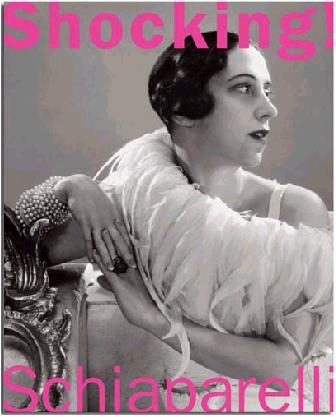
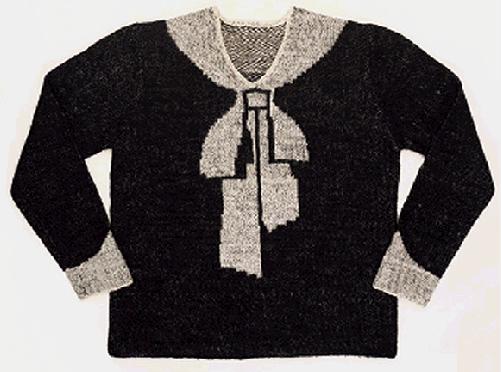
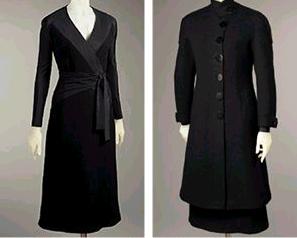

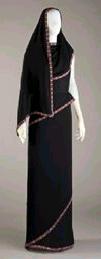
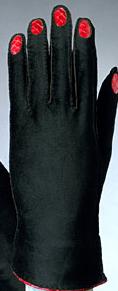
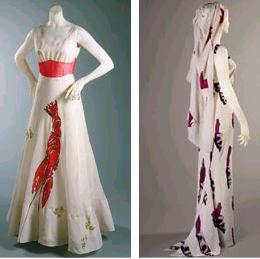
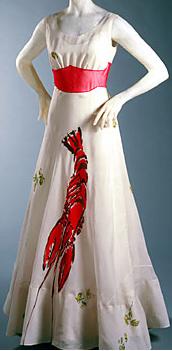
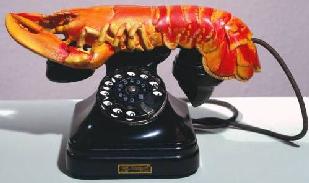
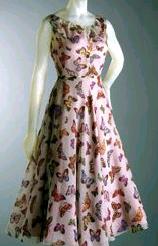
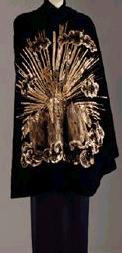
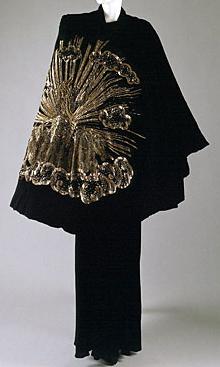


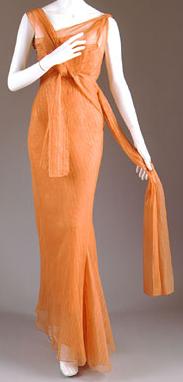
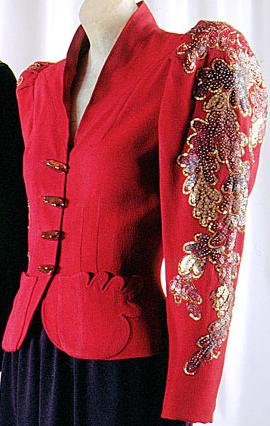
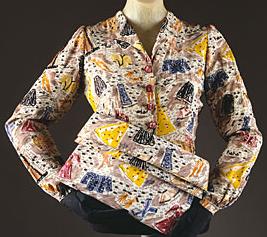
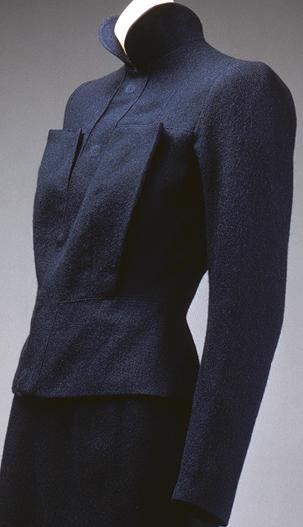
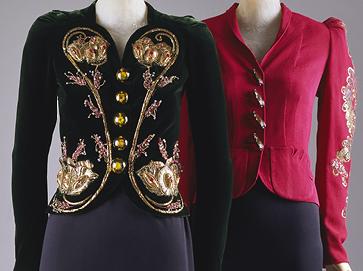
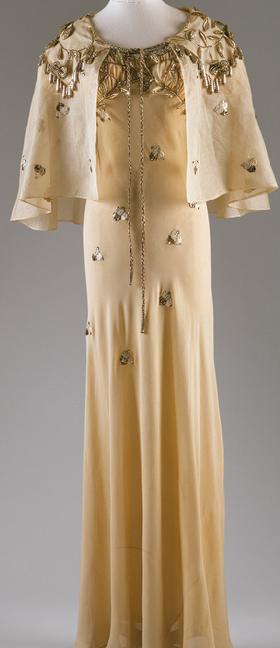
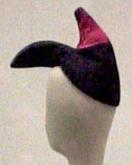
The Woman

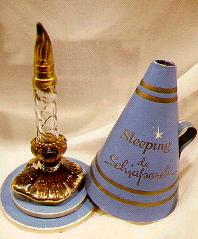
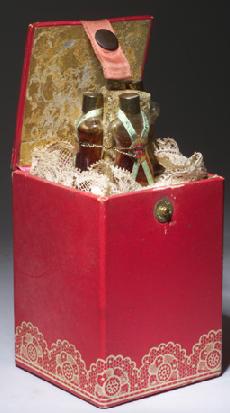
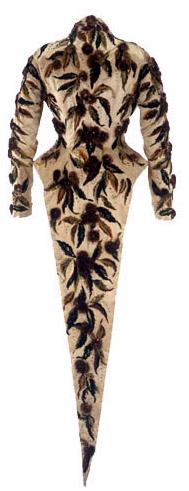
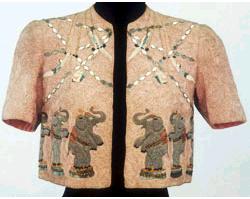
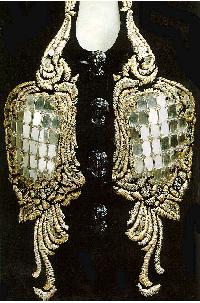
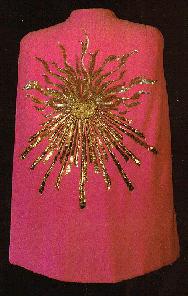
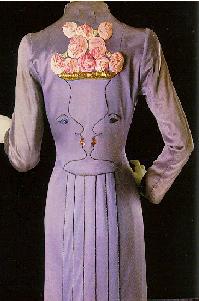
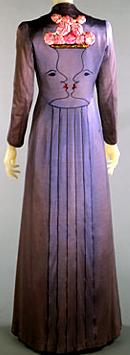
Books by or About Elsa
Schiaparelli
